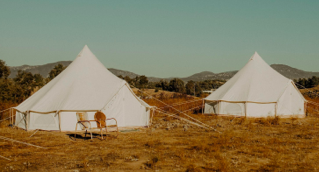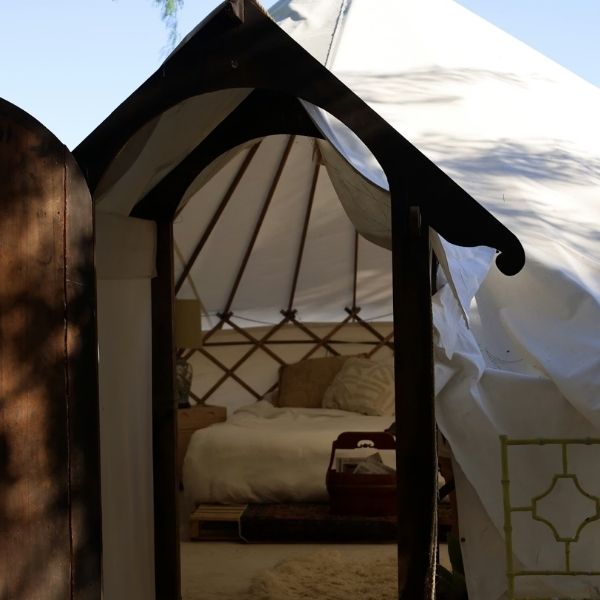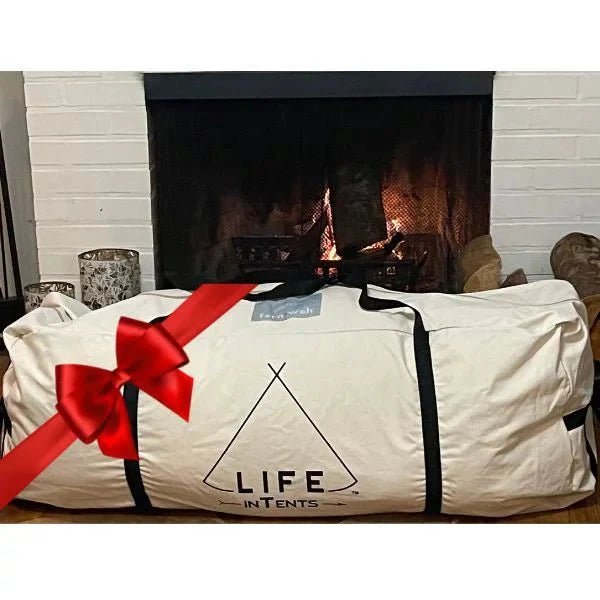Call Us: 1-971-220-8360
Free Shipping

Pay No Sales Tax
30-Month Warranty
Call Us: 1-971-220-8360
Tents
Shop


The LiT List
Glamping & Camping Ideas + Resources
Is Your Tent Mold Resistant? AATCC 30 Test Explained
3 min read
A natural cotton canvas tent is the standard for high-end camping shelters for many reasons. Cotton canvas is durable, insulating, waterproof, environmentally friendly, and the breathability of the fabric allows internal moisture and humidity to escape meaning less chance of condensation inside the tent. All that said, as it is a natural fabric, it can also allow mold and mildew growth unless properly treated and maintained.

Mold is a form of fungus that tends to grow on stale/musty organic substances, especially in humid conditions. An untreated cotton canvas can begin to form mold in as little as 24 hours. Mold can grow quickly and can cause rotting and tears in the fabric. It can also smell and be harmful to touch.
A canvas bell tent that has been treated with mold resistance will be a bit more expensive, but it is worth the investment as the formation of mold and mildew is substantially reduced on a tent that has been properly treated. You will find that most higher-end canvas tents on the market claim to be treated for mold resistance as well as waterproofing. You may want to also check that the tent you are purchasing has been tested under AATCC 30 antifungal protocol.
HISTORY OF THE AATCC TEST
AATCC has provided standards development, testing materials, educational resources, and professional networking to the global textile industry for more than 100 years. The AATCC test Method 30 was first released in 1946 as an official method to test the efficacy of fungicides treated on textile materials. The current standard is the ninth version of this test method. Examples of textiles tested include polyester, cotton, nylon, linen, wool, and acrylic.

THE AATCC 30 TESTING PROCESS
The AATCC 30 method is designed to determine how susceptible textile materials are to mildew and fungal growth and evaluate the efficacy of the treatments to the tested material. This is a long process that introduces mold spores (Aspergillus niger) on a material over a 2-week period. Upon completion, the canvas control and test specimens are evaluated for the efficacy. After the incubation period, the test samples are rated if they have signs of fungus growth:
- Macroscopic growth (visible to the eye)
- Microscopic growth (not visible to the eye)
- No growth
This process makes a good indicator of the antifungal treatment, compared to other, relatively less stringent methods. The results of this test are difficult to translate to actual results that individuals will experience with their canvas tent in their precise bioregion. However, these test results are a good barometer for the potential long-term protection that your canvas will have against mildew growth.
Life inTents tents that use DoektecTM canvas are rated to have No Growth, found through this AATCC testing method! Plus they are a heavy 11.5oz canvas, are waterproof, and certified to be fire retardant through CPAI-84 standards.
This testing takes time and money which is why even some tent companies claiming to have mold resistant canvas cannot prove it. Ask them for the results of their AATCC 30 test!
Below is a copy of Life inTents’ most recent AATCC 30 test results:

Aside from ensuring your tent is well protected from the start, there is no substitute for regular maintenance! Follow our guide on maintaining a canvas tent so it can be enjoyed for many years!!
Related Resources

THE LIT LIST 4 min read
5 Reasons Yurt Tents Are the Ultimate Backyard Guest House
Hosting overnight guests? Consider a spacious backyard yurt tent as a spare guest room. Since many fHosting for the holidays or inviting overnight guests? Here are 5 reasons why yurt tents create the ultimate backyard guest room for your visiting family and friends. Affordable reason for selecting a yurt style tent for more permanent backyard glamping.

THE LIT LIST 2 min read
Black Friday Through Cyber Week Camping Tent Sales
Are you looking to save some money on purchasing a 2025 camping tent gift for that special someone? Popular Blogs
Camping Gift Ideas for People Who Have Everything
The Best Portable Tent Heaters - Ways To Heat A Canvas Tent
Glamping in Northern California: 8 Luxury Sites
Waterproofing A Canvas Tent - Retreating Canvas
33 Camping Quotes to Inspire Your Next Adventure
What Is Glamping? Origins, Definition, Destinations & More
10 Tips for Staying Warm While Winter Camping
How to Maintain and Clean a Bell Tent
Essential Family Camping Checklist: What to Pack [PRINTABLE]
Backyard Glamping Checklist for an Unforgettable DIY Glampsite
Popular Products
Subscribe
Sign up to get the latest on sales, new releases and tips
BECOME AN INSIDER
We’ll periodically share inspiration, bell tent releases, special offers, and event notifications with ya.



